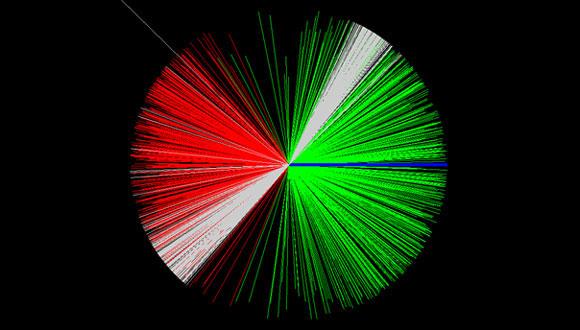Joint Seminar in Nuclear Physics
PROGRAM
14:30 - 14:50 Refreshments
14:50 - 15:50 The Interaction of Neutrons With 7Be: Lack of Standard Solution to the "Primordial 7Li Problem", Moshe Gai, UConn
Abstract:
We used neutrons from the SARAF to address one of the fundamental problem of Cosmology: the "Primordial 7Li Problem". Big Bang Nucleosynthesis (BBN), a parameter free theory of Cosmology, that only relies on measured nuclear and cosmological inputs, predicts very well, with accuracy that approaches the 1-2% level, the formation of the primordial hydrogen, deuterium, helium and helion. But it over-predicts the abundance of the primordial 7Li (relative to hydrogen) by a factor of approximately 3. I will review BBN theory and the "Primordial 7Li Problem".
Approximately 95% of the primordial 7Li is from the much later decay of 7Be, hence our measurement at the SARAF of neutron interactions with 7Be addressed the possibility of destroying 7Be by neutrons, the last possible avenue that may or may not lead to a smaller predicted abundance of 7Li.
The SARAF has reached a world record for the production of epithermal neutrons. At approximately 50 keV they are ideally suited for a measurement of the interaction of neutrons at the original conditions of the BBN.
However the large neutron flux necessitate a detector system that can survive and operate in such a "hostile" neutron environment. We developed the use of Nuclear Track Detectors (NTD) made of CR39 plates to measure protons and alpha-particles emanating from the interaction of neutrons with 7Be. We demonstrate that CR39 can be used as an "analytical tool" to compare different measurements performed under very different conditions in two very different facilities: cold neutrons from ILL and epithermal neutrons from the SARAF. This comparison allow us to identify background from the interaction of neutrons with 17O in the CR39 NTD itself. We used this background as a "self calibration line" and together with a calibration measurement at Weizmann, we are able to identify and measure the 7Be(n,p) and the 7Be(n,a) reactions and compare to current measurements at CERN (by the n_TOF collaboration) and Kyoto. But only the SARAF measurement is in the "BBN window" without the need to extrapolate into the BBN region.
A review of the recently measured world data on the interaction of neutrons with 7Be reveals that the destruction of 7Be by neutrons together with other investigations do not lead to a standard solution of the "Primordial 7Li Problem".
15:50 - 16:15 Coffee Break
16:15 - 17:15 The low-Z Shore of the Island of Inversion - Julian Kahlbow, Tel Aviv University & MIT
Abstract:
The island of inversion is the region in the chart of nuclides around Z∼11 and N∼20 where the N=20 shell gap is quenched and intruder configurations are already dominant in the ground-state wave function. Its lower-Z boundary is not well determined.
I will discuss an experiment that aimed to study the structure of the neutron-rich fluorine isotopes 28-30F. The experiment was carried out in inverse kinematics at the SAMURAI setup at the Radioactive-Ion Beam Factory (RIBF, Tokyo/Japan). The nuclei of interest are populated in quasi-free knockout reactions at ~250MeV/nucleon, where all reaction products are measured in a kinematically complete way. Decay neutrons are detected using the NeuLAND demonstrator (GSI) and NEBULA arrays, γ-rays are measured with DALI2.
I will present the first spectroscopic information of 30F and discuss in particular the excitation-energy spectrum of 29F that is deduced in invariant-mass spectroscopy. The results are compared to predictions from shell-model and ab-initio theory.


